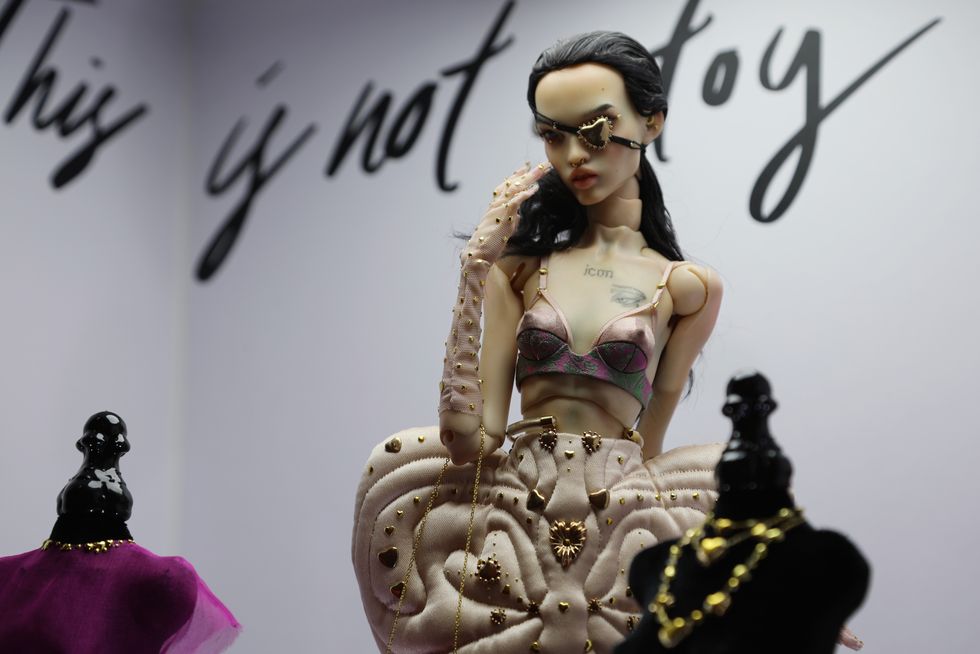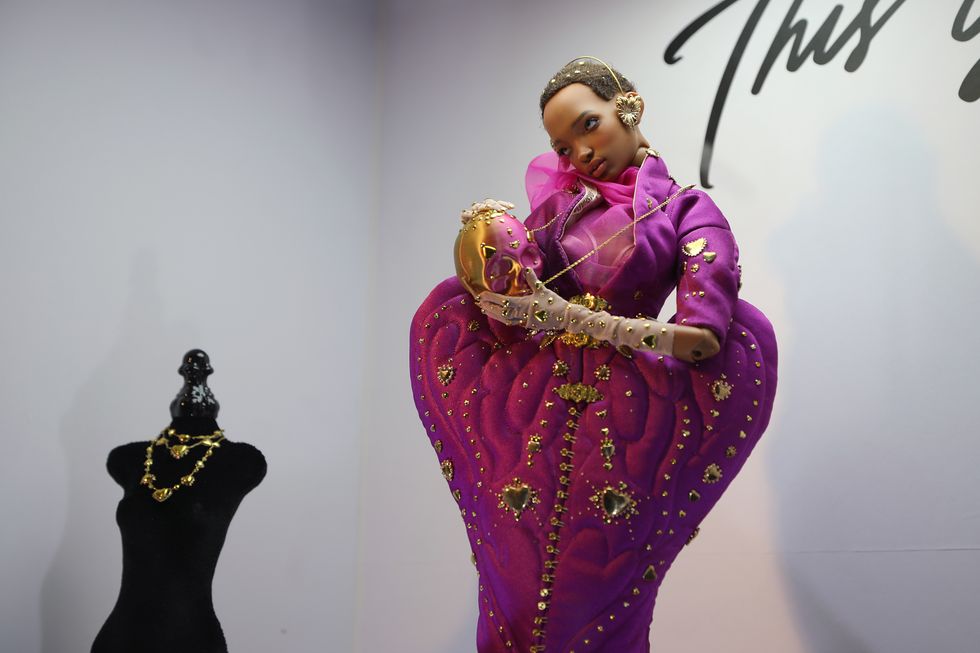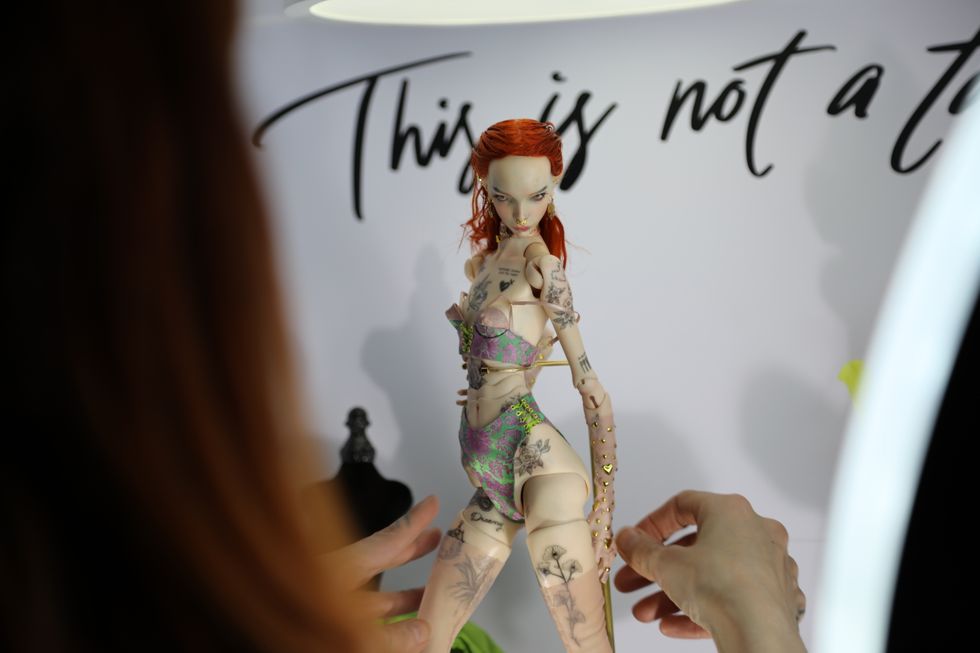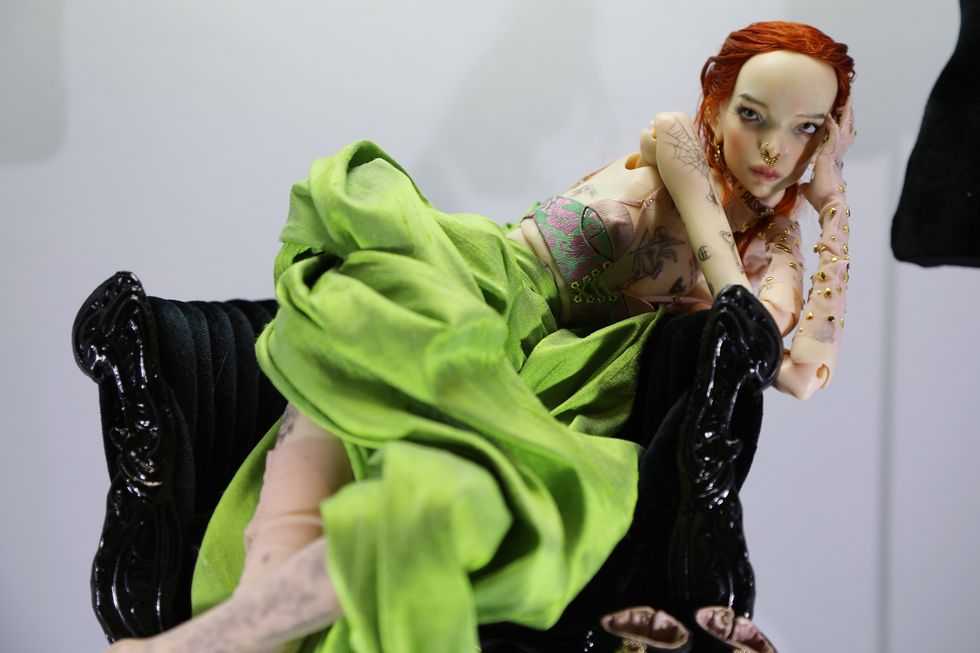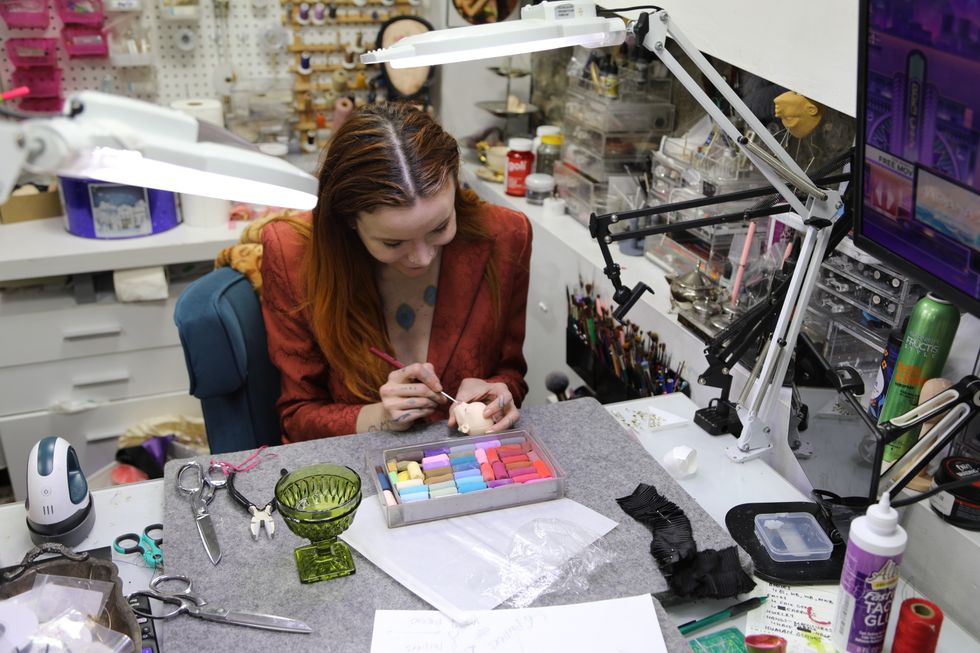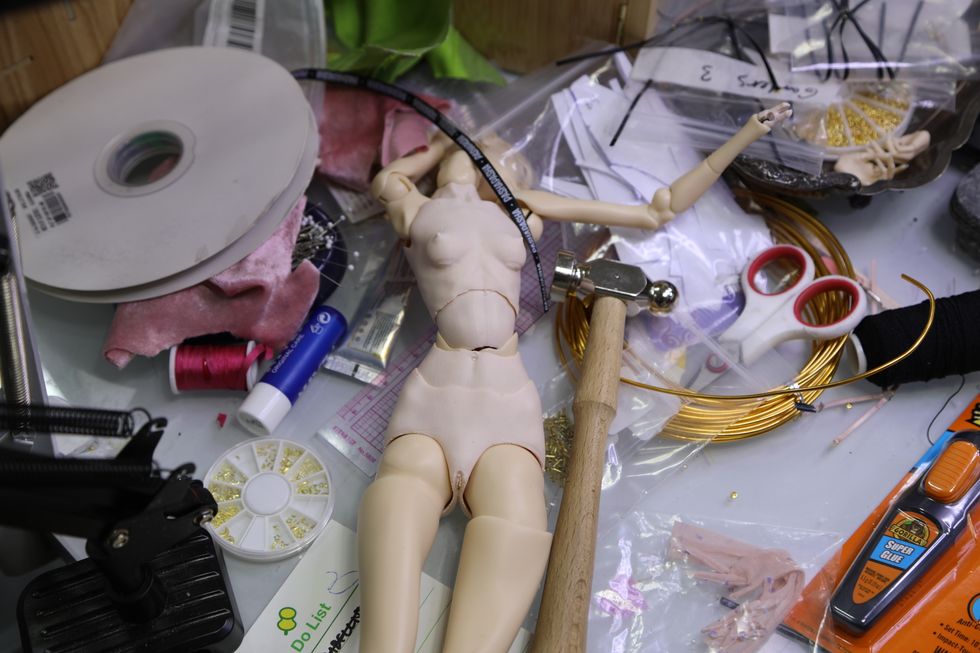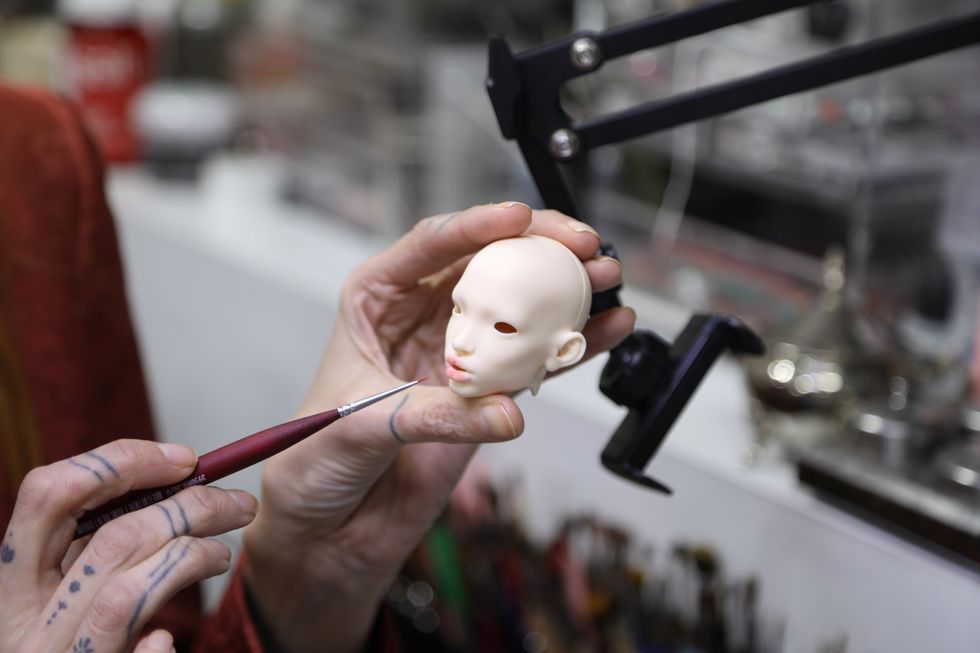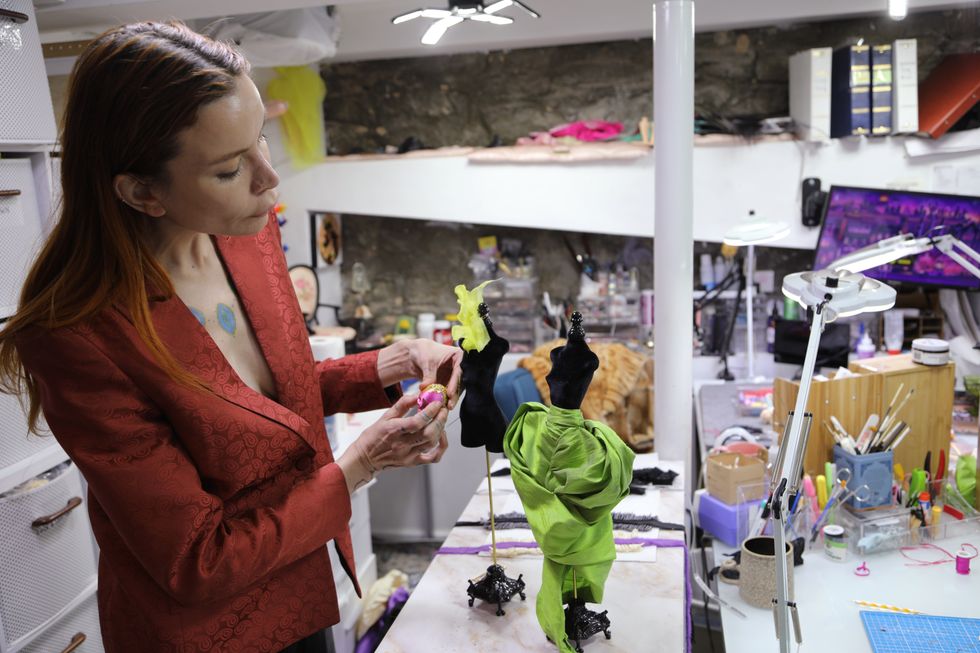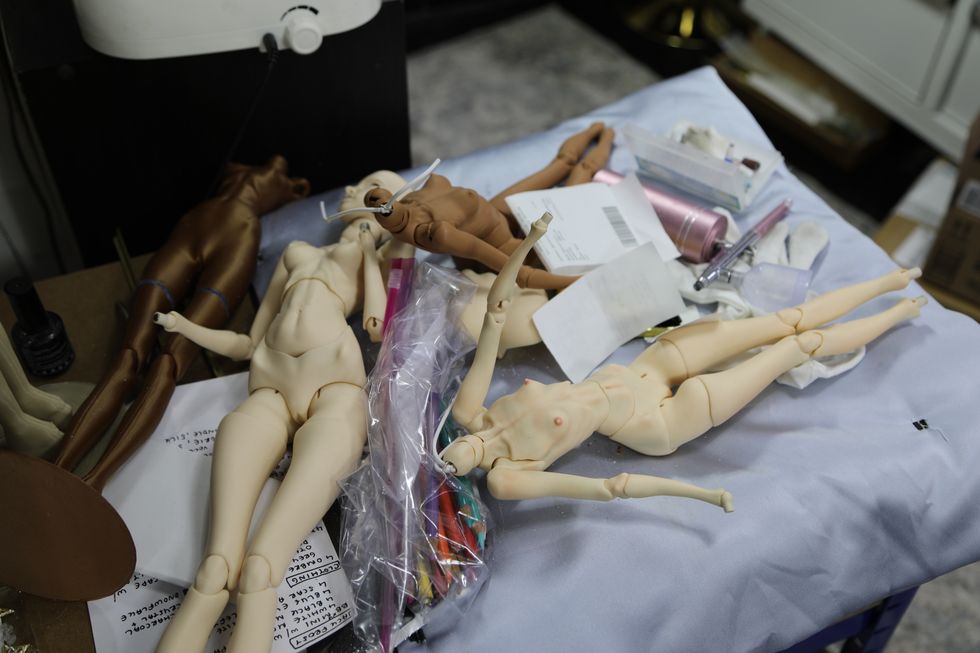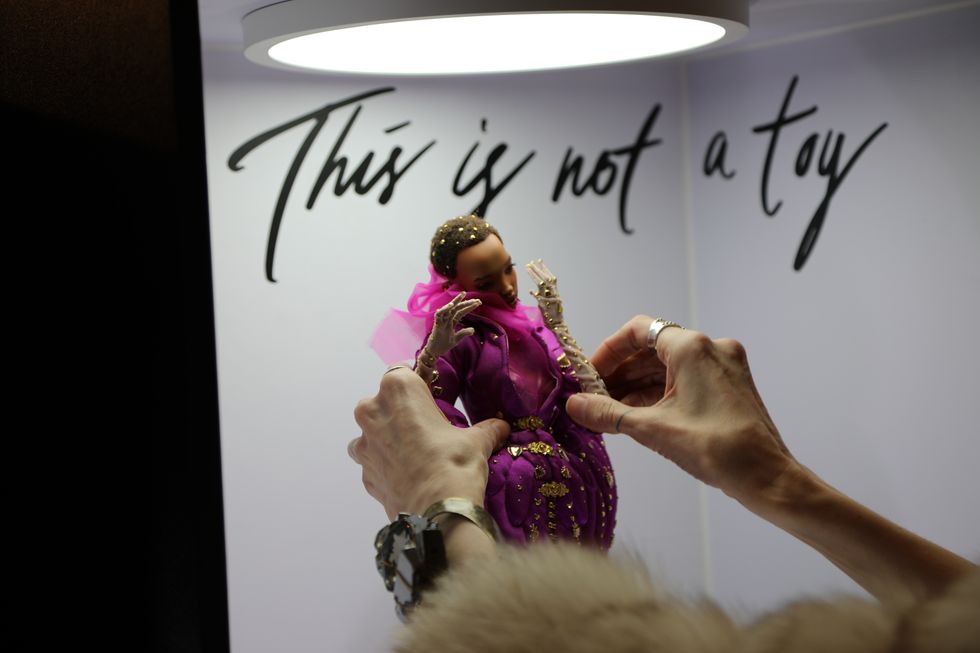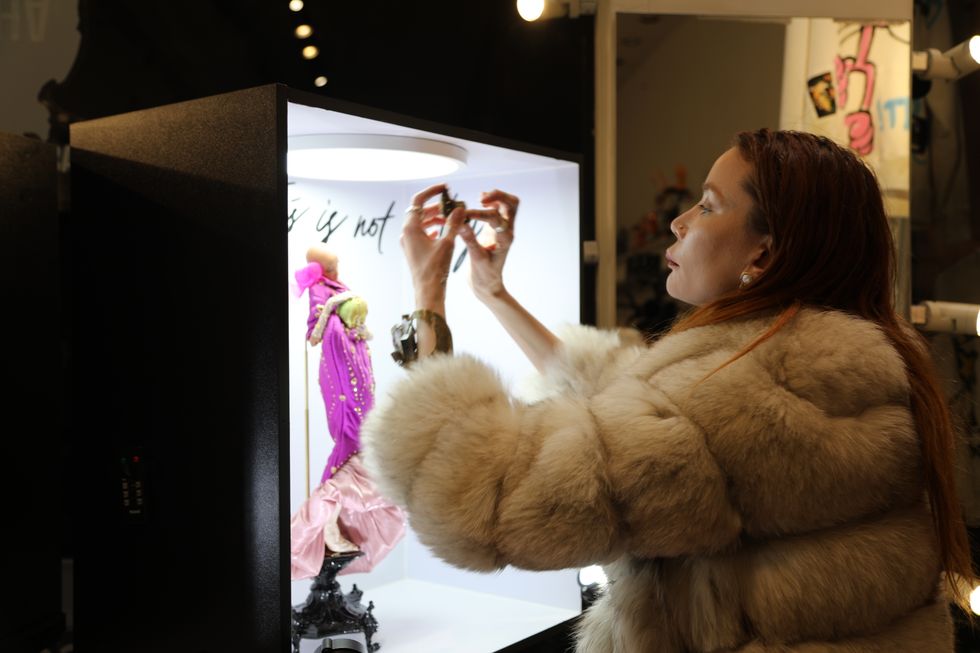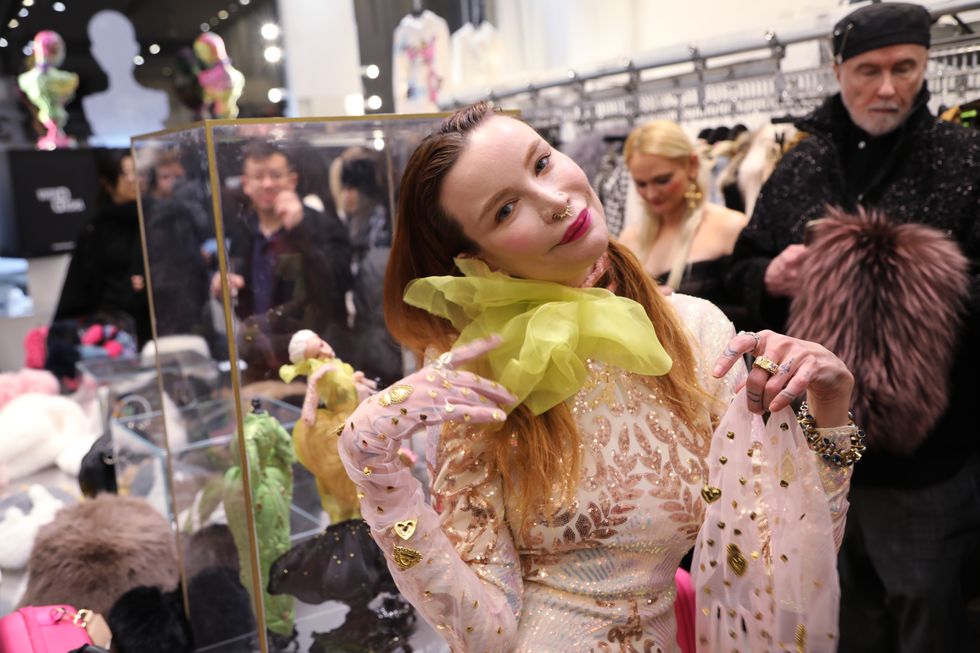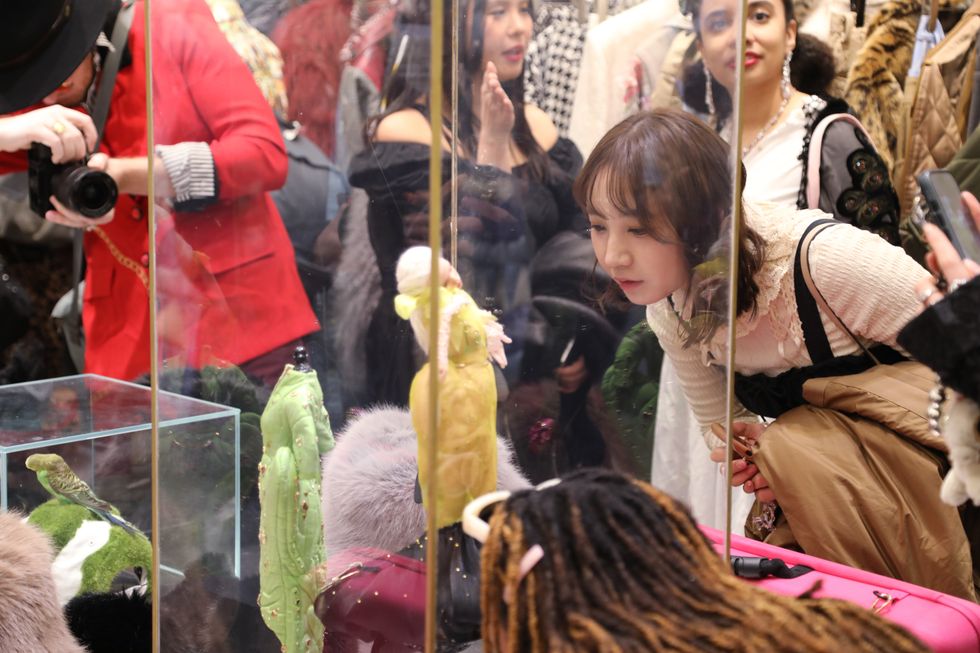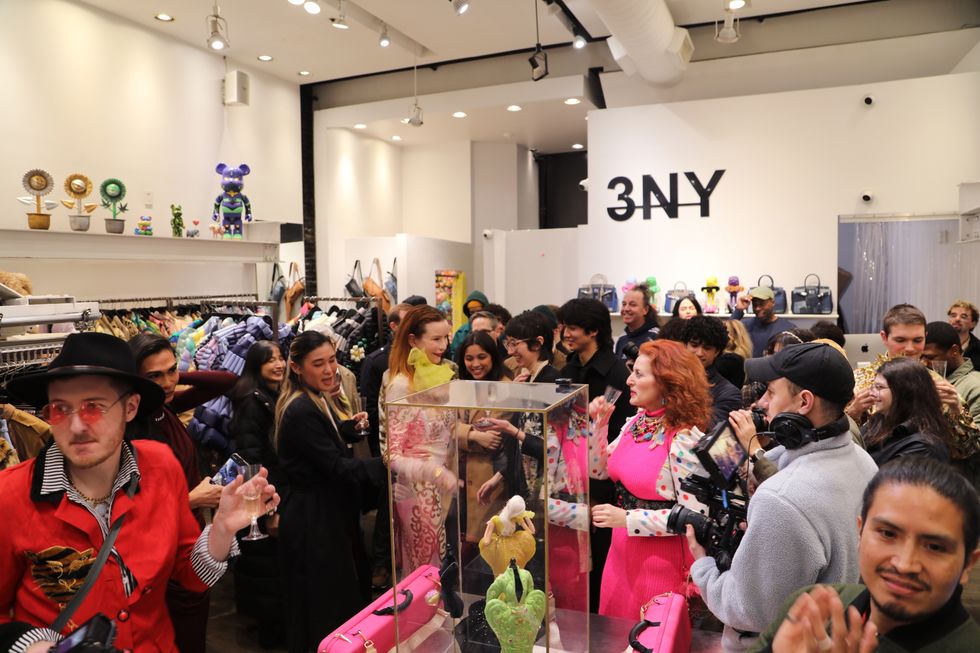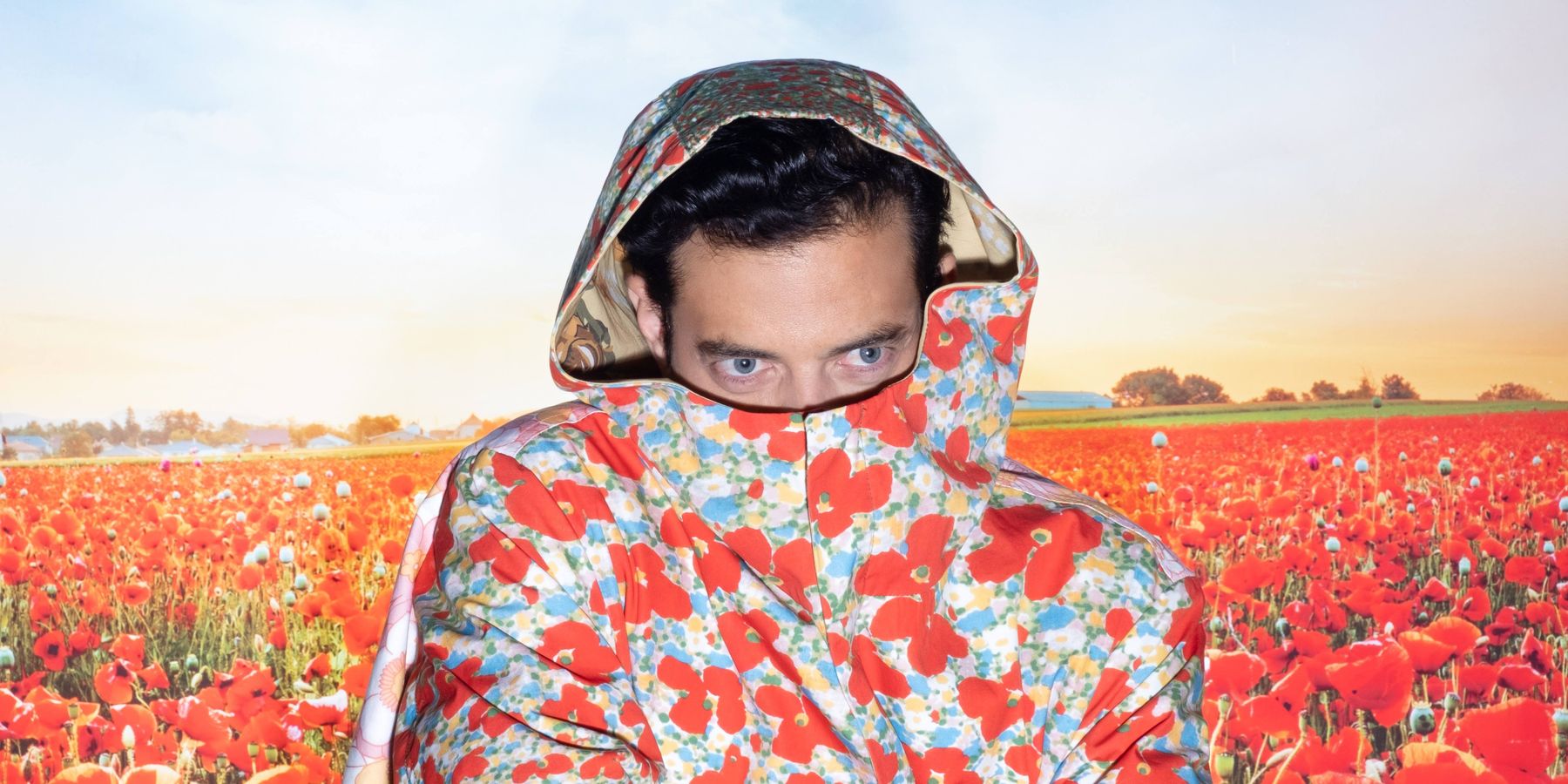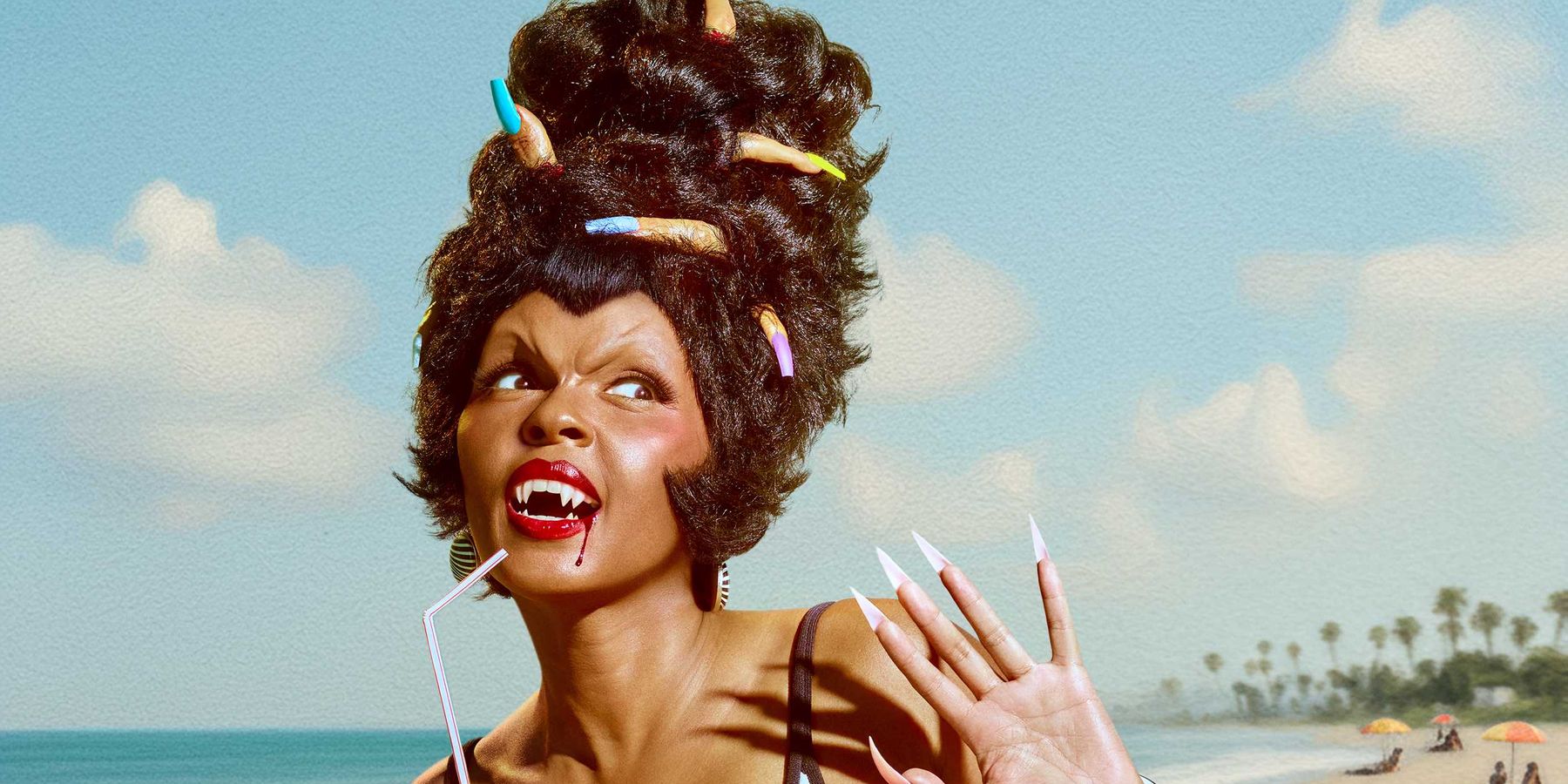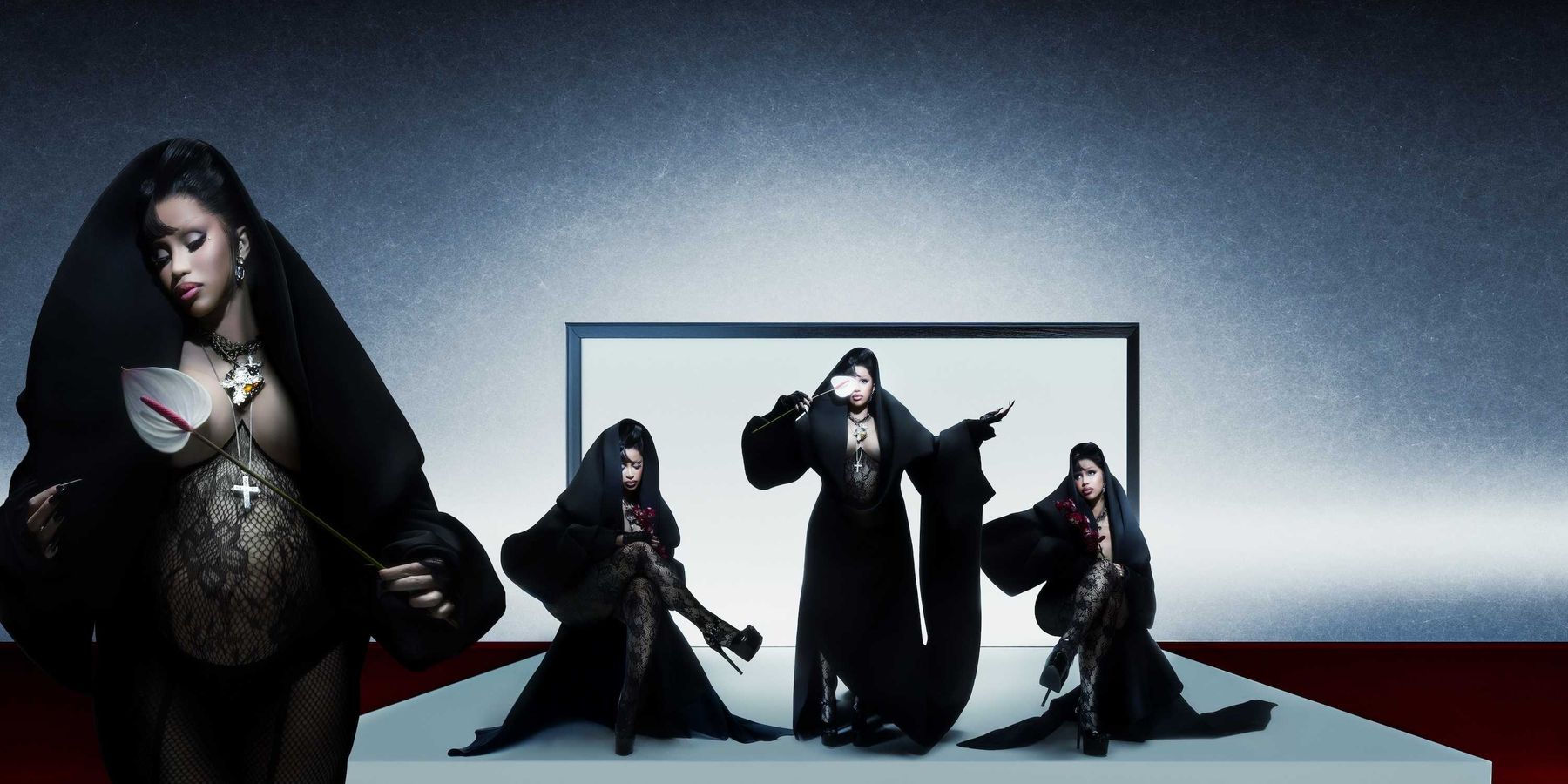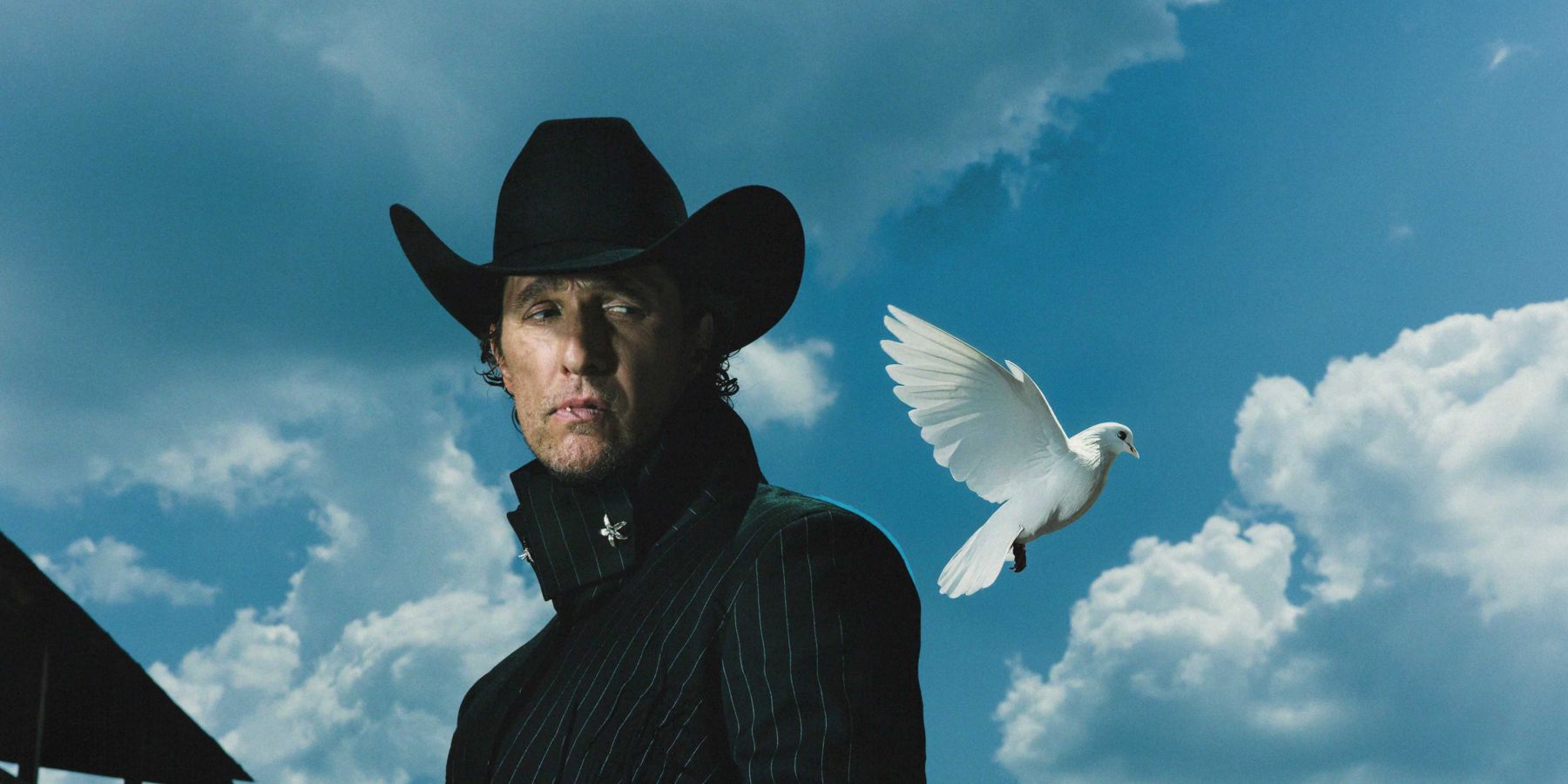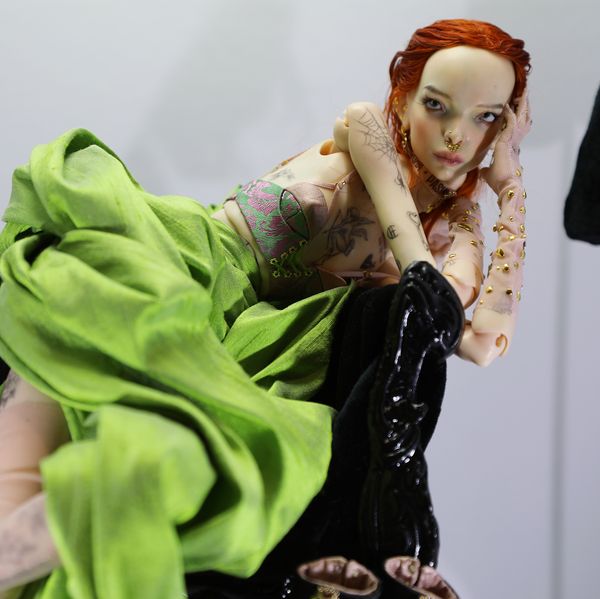
PashaPasha Dolls Have a Life of Their Own
Story by Leah James
Feb 05, 2025
If you have ever played with a doll, Pasha Setrova might just consider you an artist. In the basement of an unassuming apartment building in Harlem is a door covered in artificial foliage. This door is the rabbit hole that leads you down into the whimsical wonderland of PashaPasha New York. Amid a sea of fabric scraps and disembodied doll parts is world-renowned doll artist Pasha Setrova pinning neon yellow taffeta to a tiny mannequin, preparing for her biggest exhibition to date. From February 3rd to February 9th, this show comes to life in a large window display at 3NY in SoHo for New York Fashion Week.
Pasha is considered by many to be one of the most innovative and cutting edge ball-jointed doll artists in the world. Ball-jointed dolls, or BJDs for short, are dolls with rounded joints that allow for human-like articulation and are typically made of resin or porcelain. Their heads, eyes, hands, wigs, clothes, body and face paint can all be changed at will to make BJDs the most customizable dolls in the industry. Pasha has made a name for herself among the BJD community as an innovator with her imaginative and edgy style. By creating stunning one of a kind art dolls that sell for anywhere between $5,000 and $15,000 a piece, Pasha has been able to make a living for herself as a full time doll artist in New York City. Originally from Russia, Pasha was granted political asylum in the US over a decade ago, during which time she amassed a cult following of admirers and collectors, including some notable clients like Demi Moore, Katy Perry and Guillermo Del Toro.
The collection she is presenting this week is titled Sour Candy and features four exquisite layered looks dripping in delicious, vivid colors. Under the quilted puffer jackets and iridescent chiffon dresses lies the body of the newest generation of Pasha’s dolls. Generation four, which is being unveiled at the show, is the most advanced and articulated generation of dolls that Pasha has produced yet.
PAPER sat down with Pasha to speak about her fashion week show and how she views her dolls through the lens of expression and interactivity.
Hi Pasha, can you tell us about yourself and how PashaPasha New York came to be?
My name is Pasha Setrova. I am 45 years old, and I started making dolls when I was 24. They were static dolls, purely made for decorating a space. At some point though, they became more like elongated figures and became more high fashion as I found my style, but you know, I always wanted my dolls to be movable. About six years ago my friend Joshua McKenny (Pidgin Doll) kind of convinced me that I need to make a BJD. That was always like a dream of mine, but it was such an intimidating process for me. So when Joshua was like, "I'll show you how to make joints," I was very grateful, but I knew right away that my doll is going to be different. I knew my doll is going to be special because I wanted to make a shoulder joint.
The shoulder joint didn't exist in any doll in the world before mine, it was really weird to me when a doll was sitting really straight, because my go-to move when I was a model was always lifting a shoulder. Then it kind of started a revolution in the BJD world. Everyone started to make shoulders because people realize that you need one. I feel like people already don't even know that it started from me anymore, but I brought so much of my experience in modeling to this doll. So I pose her as if I was posing myself, I can dress her as I would love to be dressed, and then you can change the clothes, her wig and eyes. There is such a big element of play that it just took over my whole life.
You’ve had a long and illustrious career in doll making, and now your dolls are a part of fashion week. How does it feel?
This was my dream for a long long time. I always was walking by store windows and was like, My dolls would look so pretty in it. So this is my dream coming true. Because of the internet, I don't need to showcase my dolls in real life anymore. It used to be that's the only way I could sell the dolls, but now I don't even need to. I just take pictures, I post it, and I sell it. But I always felt like I am missing something from the past. When people can come up and just look really close, you’re all nervous about what they're gonna say and stuff like that. So this is kind of like nostalgic. Throughout the week, I'm gonna change the outfit of each doll. I'm going to either undress her more or put on something more, and the rest of the clothes are going to be sitting on display in the light boxes on mannequins.
I love the idea that the dolls will change and shift throughout the week. I think it really highlights the imaginative play that your dolls are so well known for. So often, art is something to be looked at, but not touched. Your work, however, is the opposite. Can you talk about that?
BJD collectors are very different. Some of them like to play and twist, and they know how to restring all themselves, or change the eyes. And they like to make themselves wigs. Then, there is the opposite: people buying a doll [who] don't touch it. They maybe brush her hair, but some of them just keep it in the box. I always encourage people to play with it, even if you are afraid to break something. At least pose it differently once in a while. That's what it's made for. I want you to express yourself and let yourself be in this, in the art. Don't be shy.
From what I’m hearing, it seems like you see your collectors as collaborators. Can you say more on that?
It doesn't matter if you bought a blank doll and painted it yourself, or you bought a doll that was already styled and has a wig and clothes and everything. Just the way you're going to pose it, the way you're going to put it in the environment it’s in, is going to be your own expression. The way you're going to pose her is unique to you. So that's why it is interactive art. Yes, I made the doll, but if you have it, this is still you posing her, making her eyes shift that way or making her hand sitting on her body like that. This is you. You become a part of it. It doesn't matter if it's a blank doll or if you bought a full set. You are part of me now — that's it.
To frame playing with dolls as a form of visual storytelling through actions like posing, you’re able to offer your collectors opportunities to tell their own stories, and that’s really profound. Your dolls are known for being highly expressive and thought provoking. In fact, one of my favorite ways your dolls have been described was by artist Yatabazah who wrote, “Pasha's dolls achieve something so rare and difficult; they carry emotion. They are like poems.” My question for you then is, as the author of these poems, what do you think that these dolls tell us about you as a person?
I’m really glad that people see them as poems. It's so hard for me to see it like that, because I feel like through each doll, I'm like screaming to you. But there's only so much you can hear, you know? I don't know how to explain it more. Like, I really want to show that my personality has so many things that formed me: my modeling background, my really bad childhood, my Russian culture, living there as gay, living here as gay, being successful, being absolutely poor and having no food when I was a child or not having any love and seeing abuse, then now here again, being well fed in a really good environment and being a successful artist. There are so many things. This all creates a compact ball of my personality that has all of this in it and more. I feel like in each doll, when I'm posing her, and she's looking at you, I'm looking through her to you. Look at my eyes. I'm doing this, you know? It’s not her. I'm posing her like that. No matter if I'm making her more sweet or more vamp, it's still me and this ball of struggles and being schizophrenic and everything. I'm like yelling through her. In my mind, I thought all you see is a pretty girl. So I'm glad they are being seen as a poem, because that means something gets across to you. I thought people didn’t see that.
I think the communicative aspect of your dolls is the thing that makes them resonate with so many people. It is like there is part of your story that lives within each of them. It's beautiful the way you give a little piece of yourself to your collectors through the dolls, and then invite them to tell their own stories on that same canvas. On the subject of storytelling, your dolls often have their own names and elaborate backstories. Who are your dolls in relation to you, and how do their personalities develop?
When I create a doll, I want to know where she came from. What is she doing now? Is she a babysitter? What perfume is she using? Is she going to school? Is she a whore? I want to know. And sometimes it's really fun, like I can put a cigarette in her hand, and some people will say, "Why is your doll smoking?" So I say, "Don’t worry. She won't get a cancer. This is just a part of her personality." She is a bad girl, or maybe she's a good girl. I don't know. Most times, the dolls are creating their backgrounds themselves, and they surprise you so much. You can have a specific plan for a doll, then it just doesn't work. For example, if this wig doesn't look good, then instead of long hair, you try a pixie cut wig, and you're like, This one is a good one. Then her whole demeanor completely changes, and suddenly, she's way sexier now than I planned. I thought she was going to be a little southern belle with curls, all sweet and nice, and then suddenly she became this vamp, sitting and smoking and cursing.
Do you feel that your identity as a gay woman factors into your dolls’ personalities?
So again, my dolls have their own life, and I don't influence them. It's like being a parent — some of them gay and some of them straight. I can't force them to be gay. I wish they were all, but most of them are straight. I am really glad that I left Russia, and I would never go back. I'm glad that I have this culture and heritage and stuff, but I will never go back to a country that says that being gay is illegal. I feel like we're really so far past that. I am very happy that I can express myself as I want because I know that a lot of people who are still there that can't. So this is something I am always l grateful for.
Your dolls have a very uniquely New York feel to them. Can you tell us how the city influences your work?
The environment plays a big part. I like to show my dolls less clean, more dirty, more handmade. I feel like this is a part of New York. If you are not walking by a rat-infested trash bag, you're not in New York. Just like how our house is crooked with so many pipes and weird sounds and levels. This is New York, and I think it also transpires in my dolls. They are not clean. They're not always nice. They are edgy, they have their own life, and I make it a part of their personality too. My name is PashaPasha New York. I am bringing a lot of New York in it.
What is next for PashaPasha New York?
My new doll is absolutely different. The faces are smaller, not as stylized. I saved a resemblance to my old face sculpts and made some new ones too. The hands are moving now right in the base of their fingers, so you can play with that too. And the joint in the middle now has rotation from side-to-side so she can twist. The whole doll is totally different. The proportions of the whole body is absolutely different, more realistic.
As the world of doll making continues to change and shift now more than ever, what are you most excited about seeing in the future?
I'm looking forward to seeing artists that are very unique, which is not hard to do in America. In America, every artist I know is absolutely unique. And I think that's just because it is a multicultural country. I love how Joshua can always create something up to date, then you, Leah, have your own transgender idea with ETHEREALGIRL, which is absolutely unique and so New York. Or Numina Dolls, who creates interesting sets, he is also very unique. It’s kinda fashion, but also kinda like a movie. So I want to see more art in BJDs. I don't want anyone to create dolls, I want them to create art. I want you to remember very, very clearly when I say there are no rules. You cannot do rules. Do opposite of rules.
Photography: Leah James
Related Articles Around the Web
MORE ON PAPER
Entertainment
Rami Malek Is Certifiably Unserious
Story by Joan Summers / Photography by Adam Powell
Story by Joan Summers / Photography by Adam Powell
14 November
Music
Janelle Monáe, HalloQueen
Story by Ivan Guzman / Photography by Pol Kurucz/ Styling by Alexandra Mandelkorn/ Hair by Nikki Nelms/ Makeup by Sasha Glasser/ Nails by Juan Alvear/ Set design by Krystall Schott
Story by Ivan Guzman / Photography by Pol Kurucz/ Styling by Alexandra Mandelkorn/ Hair by Nikki Nelms/ Makeup by Sasha Glasser/ Nails by Juan Alvear/ Set design by Krystall Schott
27 October
Music
You Don’t Move Cardi B
Story by Erica Campbell / Photography by Jora Frantzis / Styling by Kollin Carter/ Hair by Tokyo Stylez/ Makeup by Erika LaPearl/ Nails by Coca Nguyen/ Set design by Allegra Peyton
Story by Erica Campbell / Photography by Jora Frantzis / Styling by Kollin Carter/ Hair by Tokyo Stylez/ Makeup by Erika LaPearl/ Nails by Coca Nguyen/ Set design by Allegra Peyton
14 October
Entertainment
Matthew McConaughey Found His Rhythm
Story by Joan Summers / Photography by Greg Swales / Styling by Angelina Cantu / Grooming by Kara Yoshimoto Bua
Story by Joan Summers / Photography by Greg Swales / Styling by Angelina Cantu / Grooming by Kara Yoshimoto Bua
30 September
Music
Demi Lovato Is No Joke
Story by Ivan Guzman / Photography by Jason Renaud / Styling by Chris Horan/ Makeup by Loftjet / Set design by Allegra Peyton
Story by Ivan Guzman / Photography by Jason Renaud / Styling by Chris Horan/ Makeup by Loftjet / Set design by Allegra Peyton
15 September
